
A Complete Guide to Moroccan Food and Drinks
Moroccan food and drinks are one of the world’s most diverse and flavorful, blending the influences of Berber, Arab, Andalusian, and Mediterranean traditions. From savory tagines to sweet pastries, Morocco’s rich culinary heritage offers a unique gastronomic experience that travelers won’t soon forget. Accompanied by fragrant spices and refreshing drinks, Moroccan food is a reflection of its vibrant culture and history. Here’s a complete guide to the food and drinks that make Morocco a must-visit destination for food lovers.
Essential Moroccan Food and Drinks
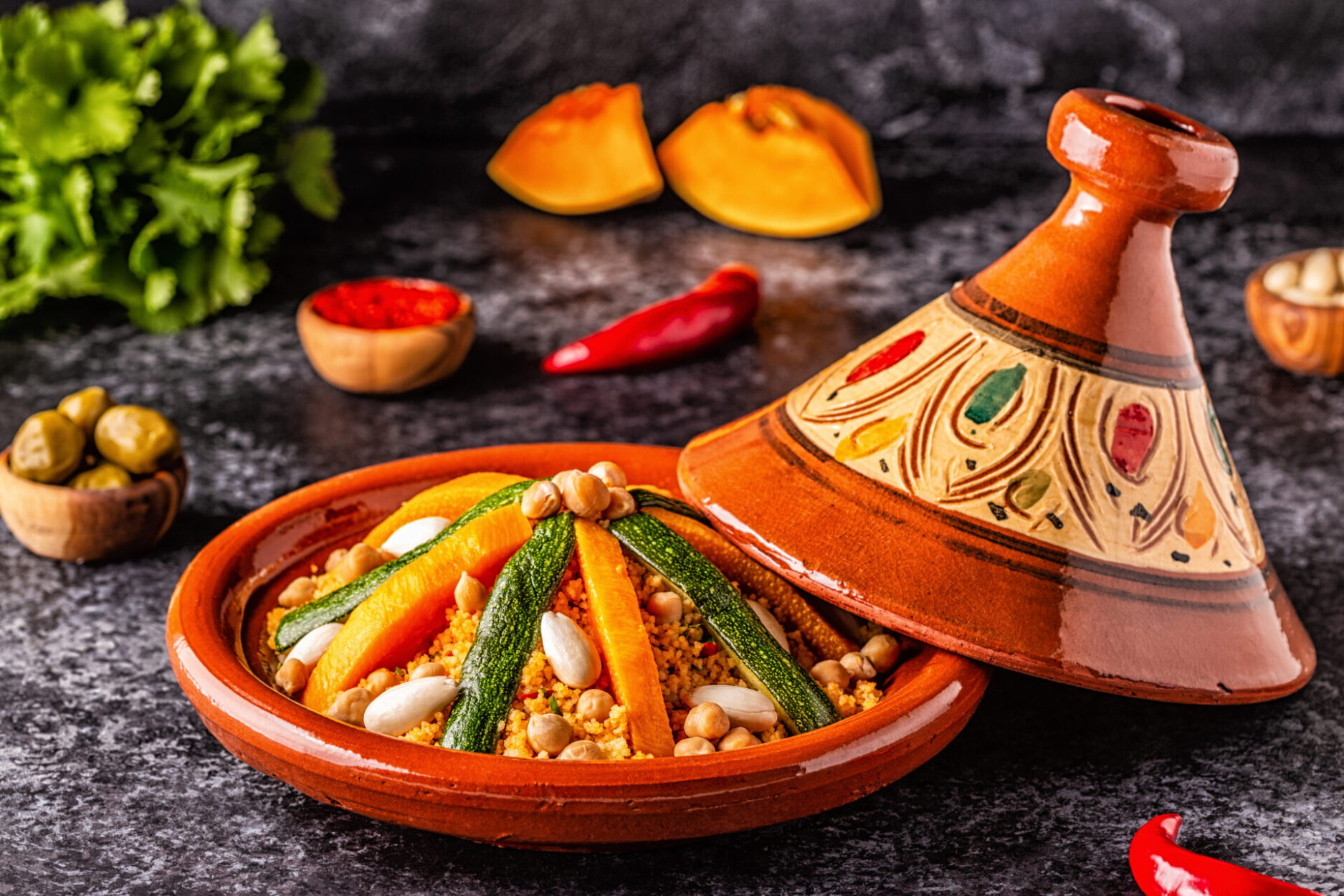
Tagine
Tagine is Morocco’s most iconic dish and is named after the earthenware pot in which it is cooked. A tagine is a slow-cooked stew that combines meats like chicken, lamb, or beef with vegetables, dried fruits, and an array of aromatic spices.
-
- Chicken Tagine with Preserved Lemons and Olives: One of the most popular versions, this tagine combines tender chicken with preserved lemons and green olives, creating a deliciously tangy flavor.
- Lamb Tagine with Prunes and Almonds: A classic sweet-and-savory dish, lamb is slow-cooked with prunes, almonds, and cinnamon, resulting in a rich, flavorful stew.
- Vegetable Tagine: Vegetarian and vegan travelers will love the vegetable tagine, which features seasonal produce like carrots, potatoes, zucchini, and chickpeas, all seasoned with traditional Moroccan spices like cumin and saffron.
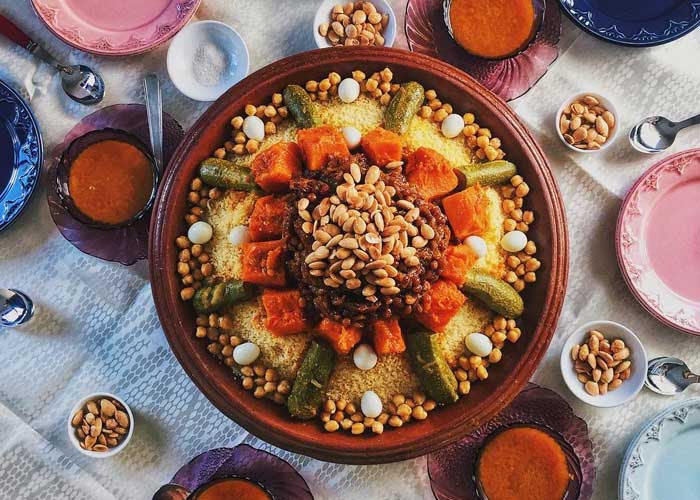
Couscous
Couscous is a staple in Moroccan households, traditionally served on Fridays. It consists of steamed semolina grains topped with vegetables, meat, or fish and flavored with a variety of spices.
-
- Seven-Vegetable Couscous: This popular dish is made with a variety of vegetables, such as carrots, zucchini, turnips, and chickpeas, often served with lamb or chicken.
- Couscous with Lamb and Raisins: For a touch of sweetness, this couscous dish combines tender lamb with plump raisins and caramelized onions.
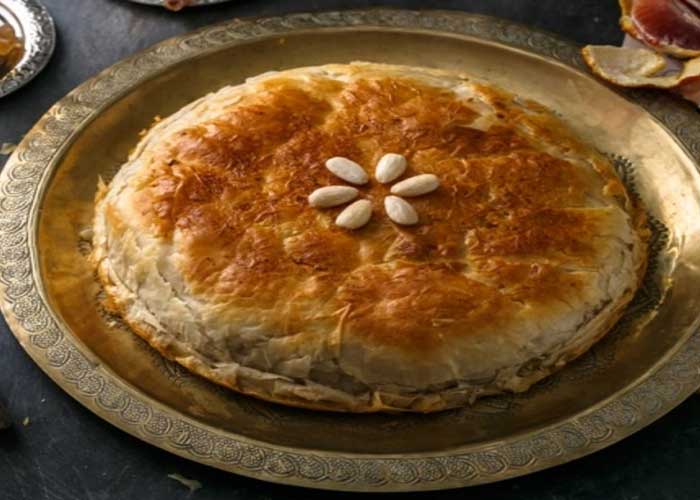
B’stilla (Pastilla)
B’stilla is a savory-sweet pie that blends the richness of poultry with the sweetness of cinnamon and sugar. Traditionally made with pigeon, it is now often prepared with chicken, encased in flaky, paper-thin warqa dough (similar to filo), and dusted with powdered sugar and cinnamon.
-
- Seafood B’stilla: A modern twist on the classic, this version uses a mix of seafood, such as shrimp and calamari, instead of poultry, providing a lighter but equally delicious dish.
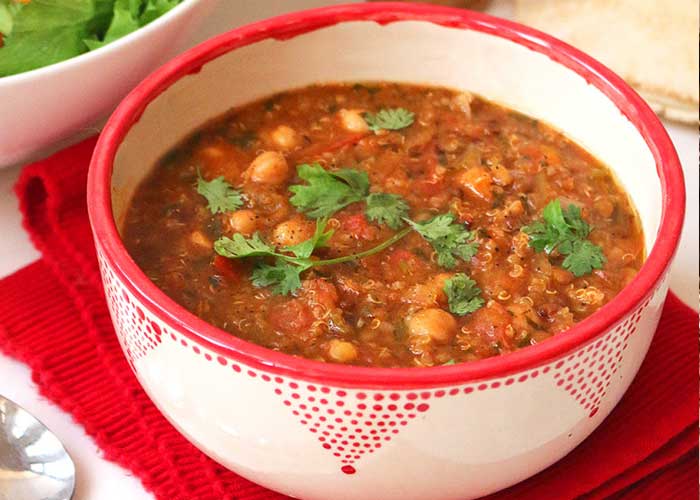
Harira
Harira is Morocco’s traditional soup, typically served to break the fast during Ramadan. Made with tomatoes, lentils, chickpeas, and lamb, it is seasoned with fresh herbs like cilantro and parsley.
-
- Vegetarian Harira: A vegetarian version of this hearty soup is also common and widely enjoyed, focusing on the use of lentils, chickpeas, and tomatoes without the meat.
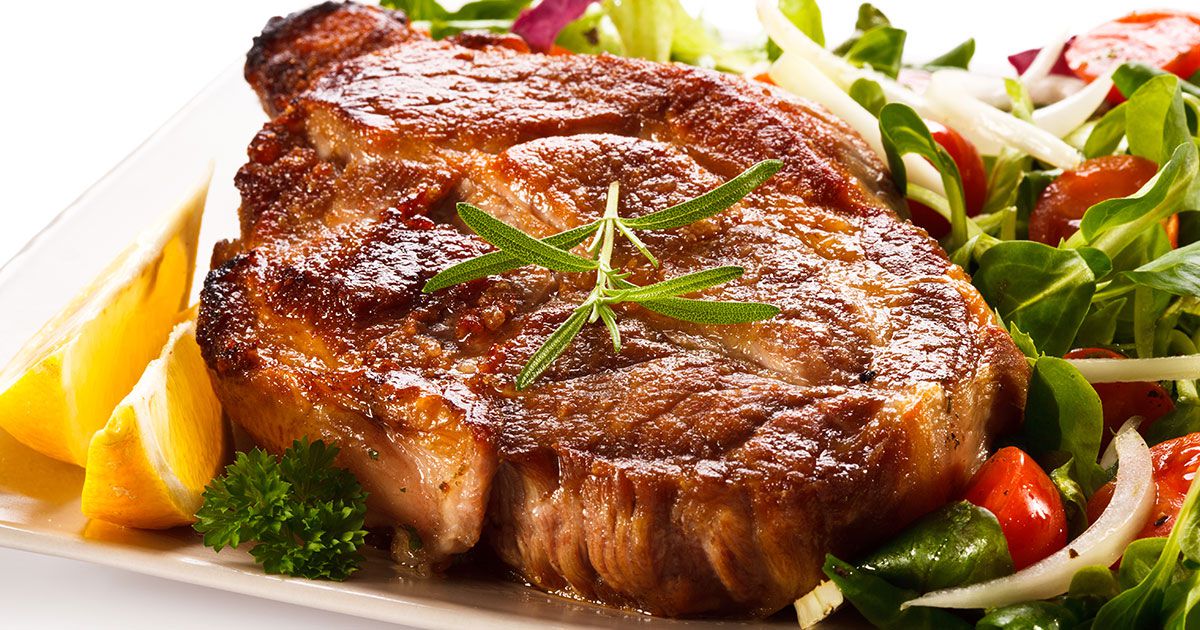
Mechoui
Mechoui is a traditional dish where a whole lamb is slow-roasted until it is tender and flavorful. It’s often seasoned with cumin and salt and served at large family gatherings or celebrations.
-
- Lamb Mechoui: This melt-in-your-mouth roast lamb is usually cooked over an open flame and served with a side of bread to soak up the juices.
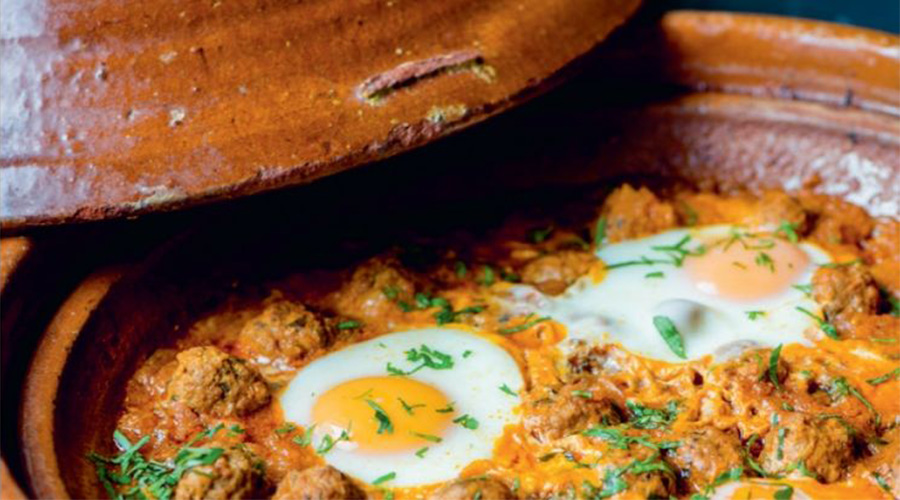
Kefta
Kefta refers to Moroccan spiced ground meat, typically lamb or beef, which is formed into small meatballs or patties. Kefta is often served as a tagine or grilled over coals and paired with tomatoes, onions, and spices.
-
- Kefta Tagine with Eggs: A popular variation, this dish includes kefta meatballs cooked in a tomato sauce, with eggs poached on top.
Traditional Moroccan Street Food
Msemen
Msemen is a traditional Moroccan flatbread, often enjoyed for breakfast or as a snack. It’s flaky, buttery, and slightly chewy, making it perfect when served with honey or jam.
Sfenj
These Moroccan doughnuts are deep-fried and often dusted with sugar or served plain. Sfenj is commonly found in street markets and is best eaten fresh and warm with a cup of Moroccan mint tea.
Bocadillo
A Moroccan-style sandwich, bocadillo is commonly filled with ingredients like tuna, boiled eggs, olives, tomatoes, and harissa (spicy chili paste), creating a simple but tasty snack.
Maakouda
These Moroccan potato fritters are crispy on the outside and soft on the inside, seasoned with herbs and spices. They are commonly eaten as a street snack or sandwich filling.
Brochettes
Brochettes are Moroccan kebabs made with marinated meat, typically beef, lamb, or chicken, grilled over open coals. They are often served with a side of salad or bread.
Join us on a Moroccan Food and Drinks Tour
Craving bold flavors? Dive into the world of Moroccan food and drinks – click now to spice up your taste buds with every bite and sip!
Traditional Moroccan Desserts
Chebakia
Chebakia is a popular Moroccan dessert, especially during Ramadan. These flower-shaped fried dough pastries are soaked in honey and sprinkled with sesame seeds, creating a sweet and crunchy treat.
Sellou
Sellou is a unique Moroccan sweet made from roasted flour, almonds, sesame seeds, and honey. Often prepared during Ramadan or special occasions, it’s rich and nutty, with a crumbly texture.
Kaab El Ghazal (Gazelle Horns)
These crescent-shaped pastries are filled with almond paste and scented with orange blossom water, making them a delicate and fragrant dessert perfect for pairing with tea.
Ghriba
These crumbly Moroccan cookies come in various flavors, including almond, coconut, and sesame, and are a popular accompaniment to tea or coffee.
Traditional Moroccan Ingredients and Spices
Ras el Hanout
A quintessential Moroccan spice blend, Ras el Hanout can contain up to 30 different spices, including cumin, coriander, cinnamon, ginger, and turmeric. It’s used in everything from tagines to couscous and grilled meats.
Saffron
Saffron, cultivated in the Taliouine region, is a prized spice in Morocco, adding a distinctive golden hue and flavor to many dishes, particularly tagines and couscous.
Preserved Lemons
Used in many Moroccan dishes, particularly chicken tagines, preserved lemons add a tangy, slightly fermented flavor that complements rich stews and sauces.
Argan Oil
Native to Morocco, argan oil is used both in cooking and beauty products. In the kitchen, the nutty oil is often drizzled over salads or used as a dipping sauce for bread.
Must-Try Moroccan Drinks
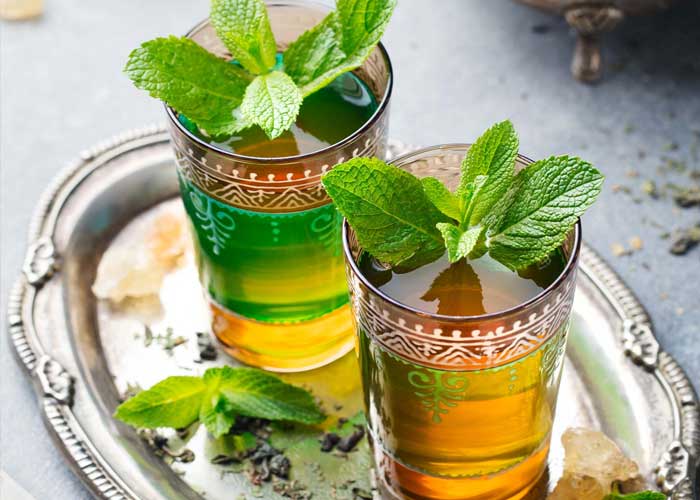
Mint Tea (Atay Bi Na’na)
No meal in Morocco is complete without a glass of mint tea, the country’s most beloved drink. Made with green tea, fresh mint leaves, and plenty of sugar, mint tea is served throughout the day and is a symbol of hospitality.
-
- How to Enjoy: The tea is typically served in small glasses, and the pouring process, which involves raising the teapot high to create a frothy top, is an art in itself. Enjoy it with a selection of Moroccan pastries like msemen or ghriba.
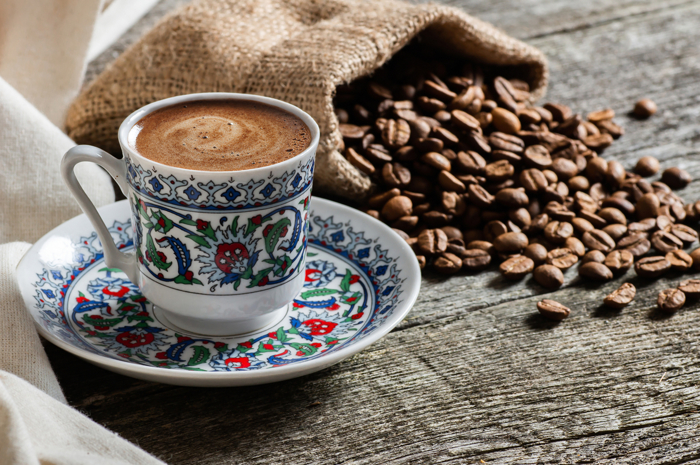
Moroccan Coffee
Moroccan coffee is strong and often brewed with spices like cinnamon or cardamom for added depth of flavor. Served in small cups, it’s perfect for a quick caffeine boost.
-
- Café Cassé: A popular variation, this is espresso with a small amount of milk, similar to a macchiato.
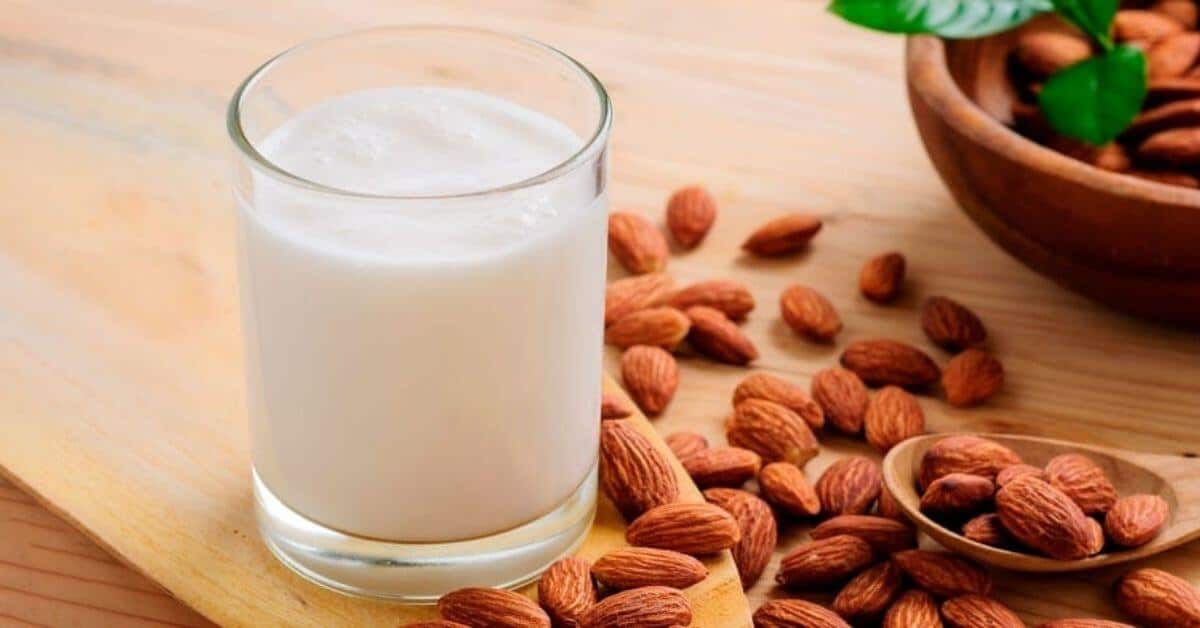
Jus d’Amande (Almond Milk)
Moroccan almond milk is a refreshing drink made from ground almonds, sugar, and orange blossom water. It’s often enjoyed cold and is especially popular in summer.
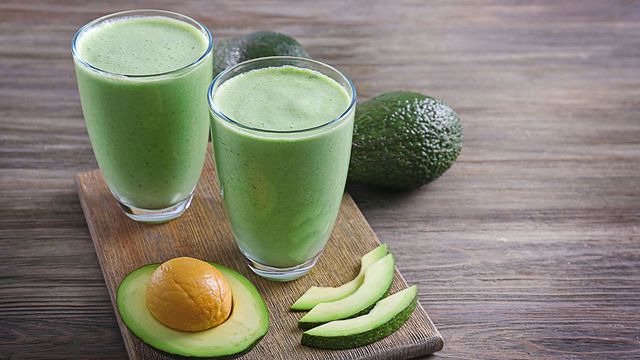
Jus d’Avocat (Avocado Smoothie)
This creamy avocado smoothie is a favorite in Morocco, often blended with milk, sugar, and sometimes almonds or dates for extra richness.
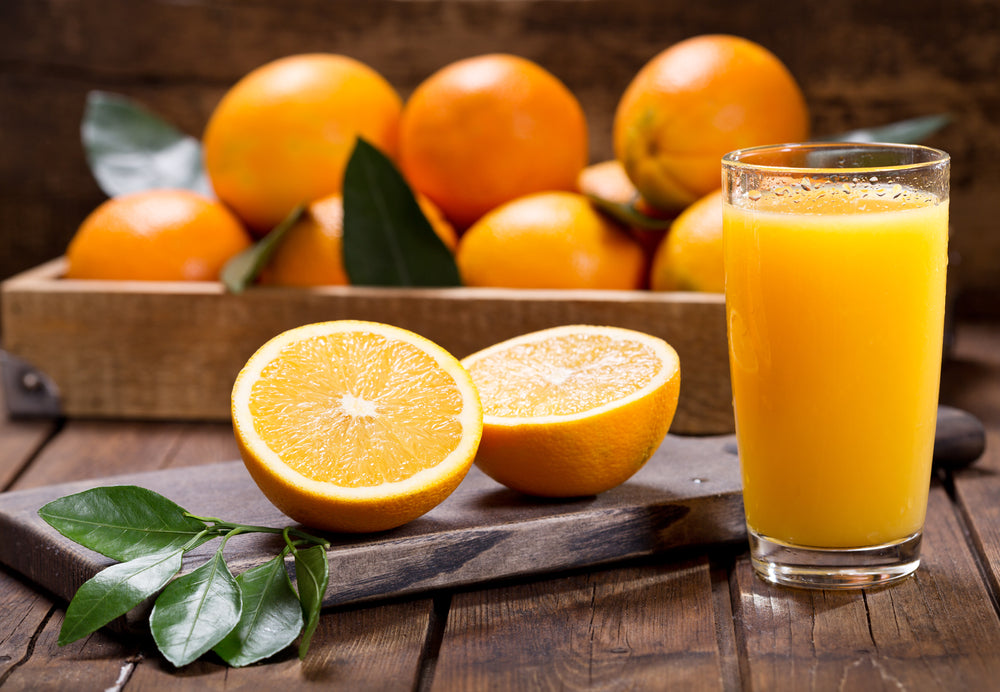
Orange Juice
Morocco is known for its sweet, fresh oranges, and freshly squeezed orange juice is a must-try, especially in cities like Marrakech, where juice stands line the famous Jamaa El-Fna square.
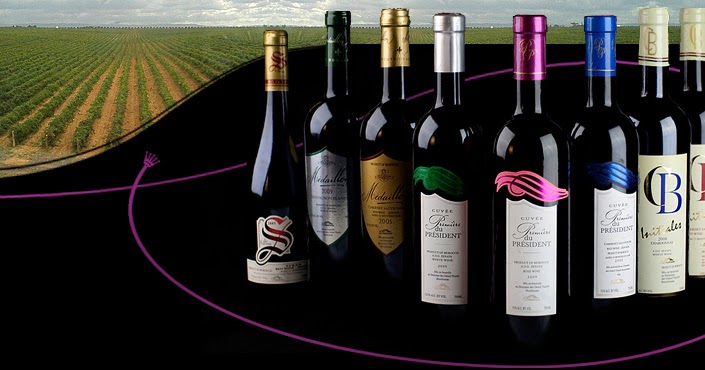
Moroccan Wine
While Morocco is a predominantly Muslim country, wine production and consumption are common, particularly in tourist areas. Moroccan wines, especially red and rosé, are gaining popularity for their quality.
- Best Regions: Some of Morocco’s best vineyards are located near Meknes and Essaouira, where the Mediterranean climate and fertile soil create ideal conditions for wine production.
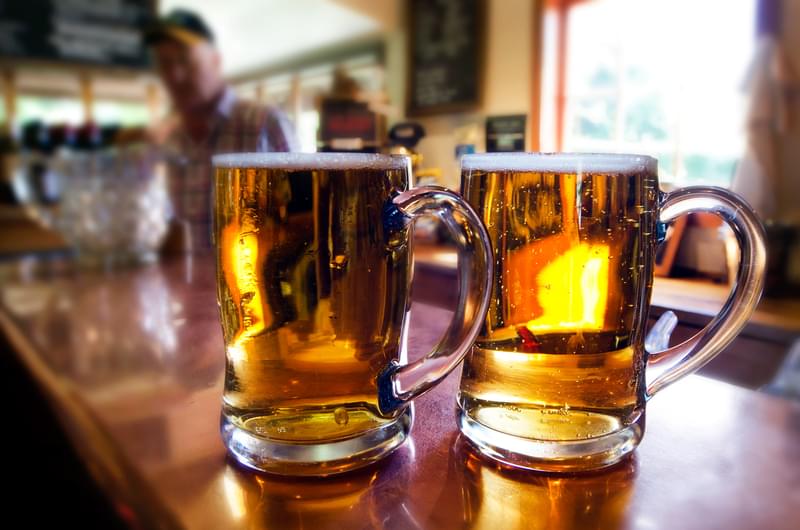
Moroccan Beer
Moroccan beers, like Flag Speciale and Casablanca, are widely available in restaurants and hotels that cater to tourists.
Moroccan food and drinks offer a delightful journey through a world of flavors, textures, and aromas. Whether you’re enjoying a hearty tagine, sipping on mint tea, or sampling sweet pastries, Moroccan cuisine is an experience that excites the senses. From bustling street markets to refined dining in riads, every meal in Morocco is an opportunity to savor the rich culinary traditions of this vibrant country. For travelers seeking to discover the heart of Moroccan culture, exploring the country’s diverse and flavorful cuisine is a must.

Absolutely loved this post! Moroccan food and drinks truly offer a unique sensory experience. the blend of spices, the use of fresh herbs, and the balance of sweet and savory are unmatched. From sipping mint tea in a Marrakech riad to enjoying a hearty lamb tagine under the stars in the Sahara, every meal feels like a cultural journey. Thanks for highlighting these delicious traditions.
I can see that you’re in love with Moroccan food and drinks. Thanks.
As a Moroccan, it fills me with pride to see our food and drinks being appreciated around the world. Our cuisine is more than just meals. it’s a reflection of our culture, hospitality, and history. From the comforting aroma of a slow-cooked tagine to the warmth of freshly brewed mint tea, every bite and sip tells a story. Thank you for celebrating the richness of Moroccan food and drinks.
Thanks for sharing your feeling about our Moroccan food and drinks.
Just came back from Morocco and I’m still dreaming about the flavors! From savory tagines and fluffy couscous to refreshing mint tea and sweet pastries. Moroccan Food and Drinks are a true celebration of culture and hospitality. If you’re a foodie, this country is a must-visit!
You’re more than welcome anytime Jeffery.
What’s your favorite Moroccan snack to grab on the go?
It’s hard to choose just one, but I’d say msemen with honey is my go-to! Warm, flaky, and just sweet enough — perfect with a cup of mint tea. Although… I won’t say no to a bag of fresh chebakia during Ramadan either!